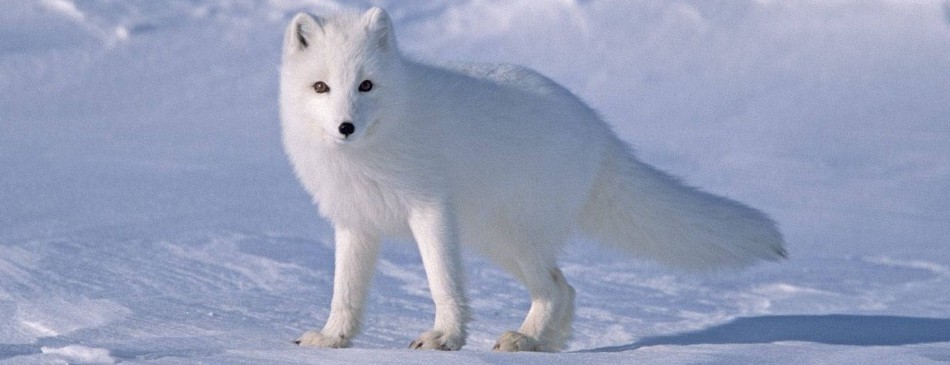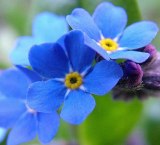During the spring and fall, a visit to a beach or mud flat is certain to reveal an enormous gathering of small birds running back and forth with the waves or flying in large formations, turning and diving as if each bird were connected to the others by an invisible string. One of these groups of shorebirds is certain to be one of the four species of plovers commonly found in Alaska. In Alaska there are two species of ringed plovers and two of dark-bellied.
The plovers can be distinguished from other shorebirds by their round dove-like heads, short pigeon-like bills, and short plump bodies and necks. Sandpipers, with whom plovers often mix, are longer bodied with more slender bills that are either straight or curved. In mixed flocks feeding in sandy areas. During the winter, all four plovers have a dark back and a light belly. In summer, however, the two black-bellied plovers change dramatically from this pattern, while the two ringed plovers maintain the same coloration. The ringed plovers remain on the beach terrain for feeding, nesting, and resting throughout the year. The dark-bellied plovers leave beaches to nest on the tundra.
Both sexes of plovers participate in incubating the eggs and tending the brood. A shallow indentation is scraped out in the sand or tundra. Four eggs are laid which are buff-colored with dark streaks and blotches. Incubation takes about 23-24 days, and the young leave the nest within a day of hatching. It is during nesting that another peculiar behavior of many shorebirds, including plovers, is seen. In order to lure a potential predator away from the nest or young, an adult bird will pretend an injury and run along the ground calling and dragging a wing, always keeping just ahead of the intruder. Then when the predator is drawn far enough away, the pretense is dropped and the bird flies back to its nest.
Plovers, especially the golden plover, are strong fast fliers and make long migrations over large stretches of water. One golden plover was recorded flying over 70 mph (113 km/hr).The diet of plovers consists of small animals, mainly insects, crustaceans, and marine worms. The tundra nesting plovers also eat crowberries and blueberries.
The two species of dark-bellied plovers are the lesser golden plover and the black-bellied plover. The lesser golden is usually 9-10 inches long and weighs 4-6 oz. In breeding plumage, as most lesser golden plovers are seen in Alaska, the male's entire undersides, neck, throat, and face sides are black. The back is speckled gold, white, and black. A white band from the forehead down the sides of the neck to the shoulder separates the back from the black underside. The bill is black. When the lesser golden plover is in flight, it appears all dark, unlike the black-bellied plover which flashes dark and white. The female is similar in color, except that the dark areas are less extensive. Lesser golden plovers nest on frost boils and high center polygons of dry tundra. They line their nests with lichens and mosses.
When they first arrive in spring, golden plovers feed on old dried crowberries and blueberries until insects and other berries are available. Their migration path is one of the most spectacular known to birds. When leaving the breeding grounds in the Arctic, lesser golden plovers either take an easterly route to South America or a westerly route to Hawaii and Polynesia.
The black-bellied plover is 11½ inches in length and weighs 10 oz . Likely to be confused with the golden plover, the male black-bellied plover has black underparts to just behind the legs where it is white. The black is speckled dark and white, but at a distance appears light; the rump and tail are light-colored and the wing has conspicuous white wing stripes. It nests on dry tundra. It is a very wary bird with a beautiful three-syllabled whistle.
The two species of ringed plovers are semipalmated plover and kildeer. The semipalmated is about 7 inches long and weighs 2¼ oz. The distinguishing mark on the semipalmated is the single long and dark band on the white breast. It has a white patch above the bill, a dark crown, white throat, neck and breast, and a buffy-brown back. The bill tip is black with the bill base orange. The legs and feet are orange-yellow. Its name comes from the partial webbing on the toes. Semipalmated plovers are easily noted along sandy beaches, for they call incessantly when approached during nesting. The semipalmated plover is a coastal migrant. They are common in southeastern and southcoastal Alaska but are seen occasionally along other parts of Alaska's coast.
The killdeer is 10 inches long and weighs 3½ oz . Noted for its vociferous shrieking of “killdeer, killdeer,” it is uncommon to rare in Alaska. They live along marshes, tide sloughs, lake shores, rivers, and ponds mostly in Southeast Alaska. Similar in appearance to the semipalmated plover, the killdeer can easily be distinguished by its double black breast-bands, rusty crown and back, and all black bill.
|
|








